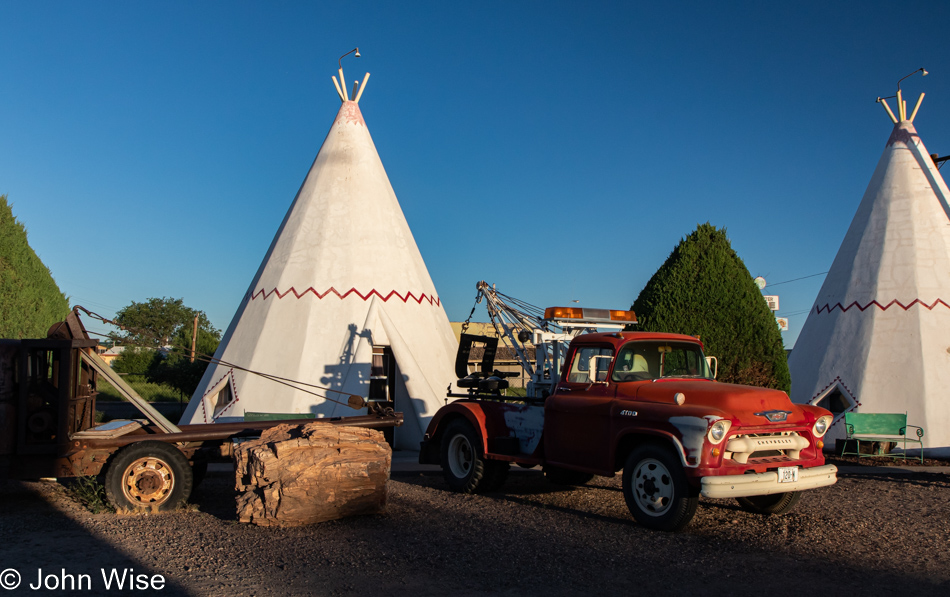
Only a few hundred feet from the railroad tracks and well within earshot of the rail crossing just up the road, our sleep was punctuated by the sound of trains passing throughout the night. Small price to pay considering we’re sleeping in a 72-year-old concrete wigwam. And not just any wigwam, mind you; John Lassiter of Pixar passed through this area on vacation some years ago and, inspired by many of the sights he had encountered (including the Wigwam Motel), he would make some of those locations famous as they found their way into the animated feature film Cars.
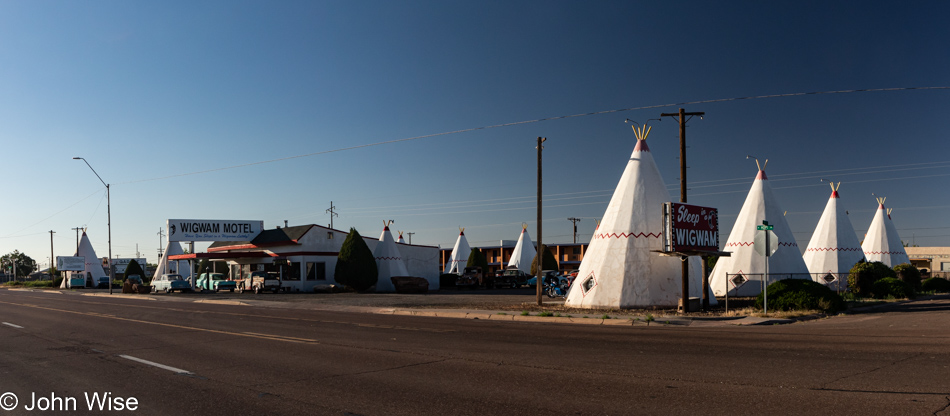
During many of our previous visits to Holbrook, we used the old town here on Route 66 as a waypoint before moving on to other places that drew out more of our curiosity. Well, today, we’re taking the time to walk around in order to get a better feel for the place.
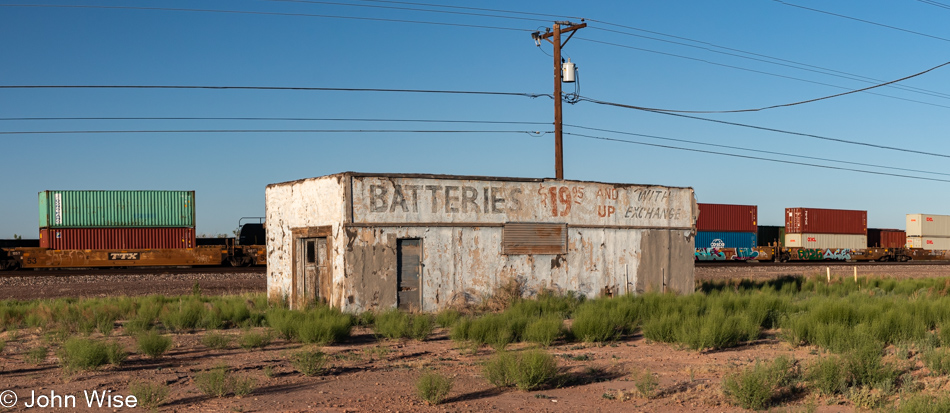
Last night, I forgot to point out the difference in gasoline prices between the Phoenix area and these northern climes: we paid $4.39 a gallon up this way and $5.19 down in Phoenix. Why this large delta in prices? This doesn’t make sense as hauling fuel further away should also impact prices, but I think what’s at work is that the oil companies know that the populations of big cities have more income, and so, in effect, they can squeeze us for greater profit while only making a reasonable amount of money in rural areas that would otherwise harm the lower-income population. That, or we are subsidizing rural America so they can better survive what is often a meager poverty-level existence?
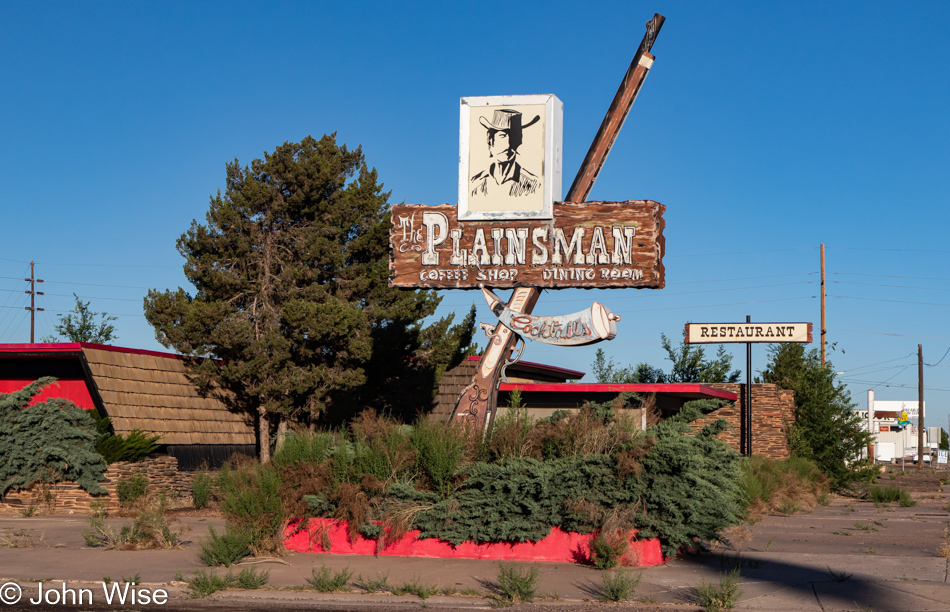
Walking down Hopi Drive, once the old Route 66, offers a tragic view into the nostalgia that hangs over this part of Holbrook as while a few businesses are hanging on most are gone, and what remains grows long in the tooth. Surprisingly, an old movie theater is still here, and had we known, we likely would have stopped in last night for the only showing of the day at 7:00 pm of Top Gun Maverick. Joe and Aggies Cafe, we’ve eaten at before, is shuttered, and its dusty windows offer a glimpse into a time capsule.

While we’ve always had a soft spot for old signage, it’s only now occurring to me that signs such as this one at Butterfields Steak House would never be affordable today. Handcrafted, heavy steal, blinking lights, and neon towering 30 feet over the road, these are now relics of the past for old towns like this. I’ve likely shared this before, but it was back in 1969 or so when I first passed through this area and had the sound of the passing trains during the night seared into my memories. While I can never know which motels or restaurants we stopped at during our epic cross-country trip from Buffalo, New York, to Long Beach, California, where my father was living, I do have distant images stored in my memories of waiting for tables at noisy cafes, looking at wildly colored desert landscapes, and endless roads.

Some of the old motels have been converted into long-term rentals, albeit without any of the services that once serviced rooms every morning, invited guests into pools, and brought people into experiences that would last lifetimes.
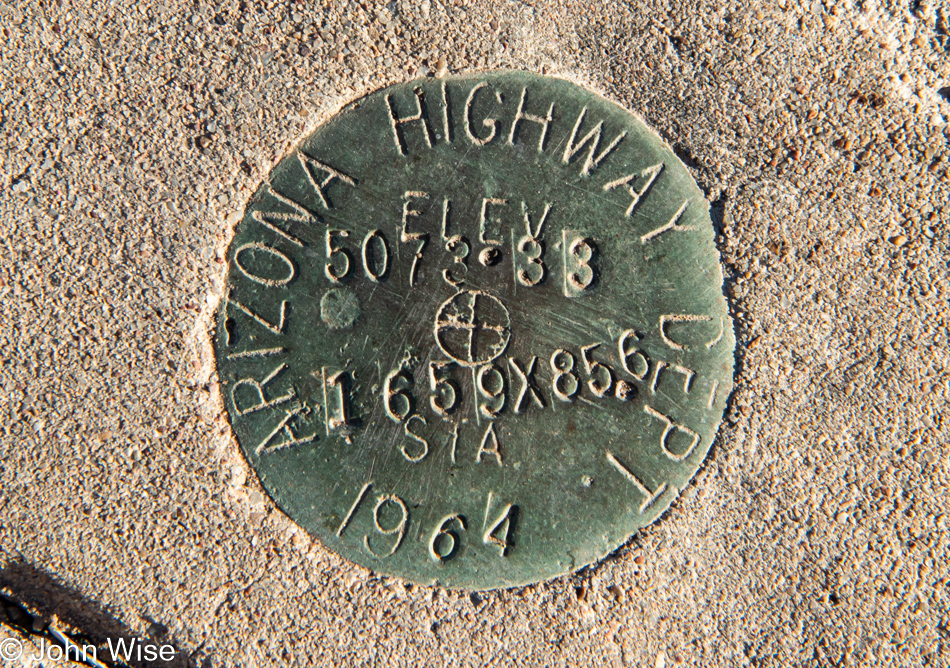
Decaying places become sad tragedies of forgotten pasts when a new generation has little to no connection to what has been. At least with the ancestral Native Americans, there’s mystery remaining in the scattered ruins, eliciting a deeper wonderment where we try to imagine something so distant that it defies our ideas of just how things worked.

When it comes to America’s relatively recent past, I think most romantic notions are gone, and the antiquated, weathered relics are skipped over as our modern car culture seeks out drive-thru convenience and luxury that allows people to separate themselves by class compared to 60 years ago when we were all just Americans out for adventure into the unknown.
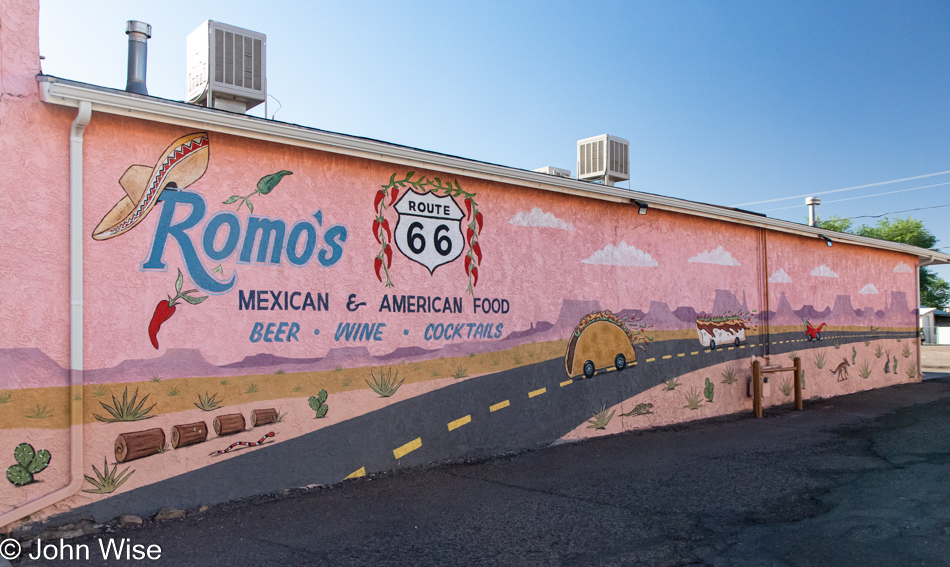
Achtung Europäer, this is part of why you want to travel to the United States. It doesn’t matter if Romo’s on Route 66 is good or bad, but you will have eaten Mexican food at a diner with a mural of a taco, burrito, and a chili pepper racing down the road through Monument Valley and past petrified wood as you yourself move between those areas.
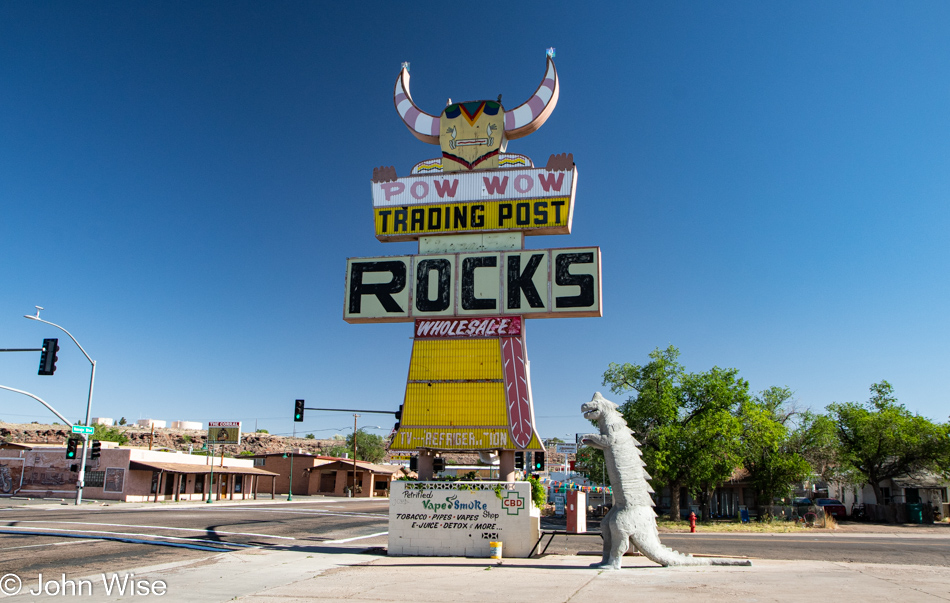
How does one shit on the past? Read the bottom of the sign, Vape Smoke Shop featuring vapes, E-juice, and CBD. Sure, life evolves and goes on, and who buys rocks these days anyway or wants to stop in at a trading post to buy tchotchkes from an old man selling junk made in China? All the same, we don’t turn old churches into sex shops (not that anyone goes to those anymore either), but to desecrate through neglect and abandonment the adornments that were part of a prosperous past is the ignorance of a culture that has failed to understand exactly what it is that makes other places that cherish their history so attractive.

Homolovi is Hopi for “Place of the Little Hills,” and that’s exactly where we headed after leaving Holbrook.
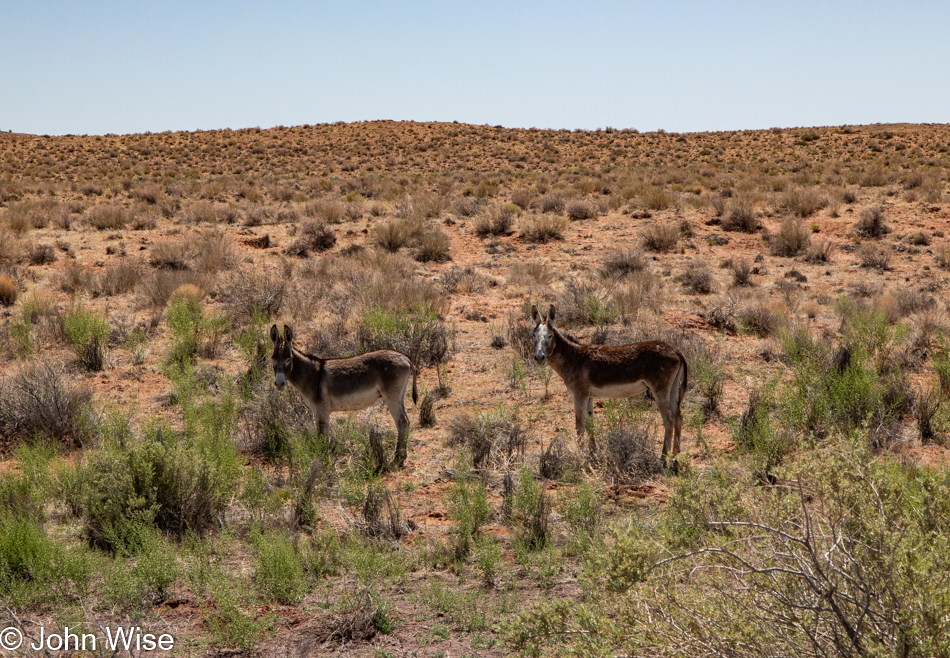
Within eye-shot of Interstate 40 is this state park that not only features donkeys staring at people menacingly but there are also seven ancient Pueblo sites dating from 1260 to 1400.
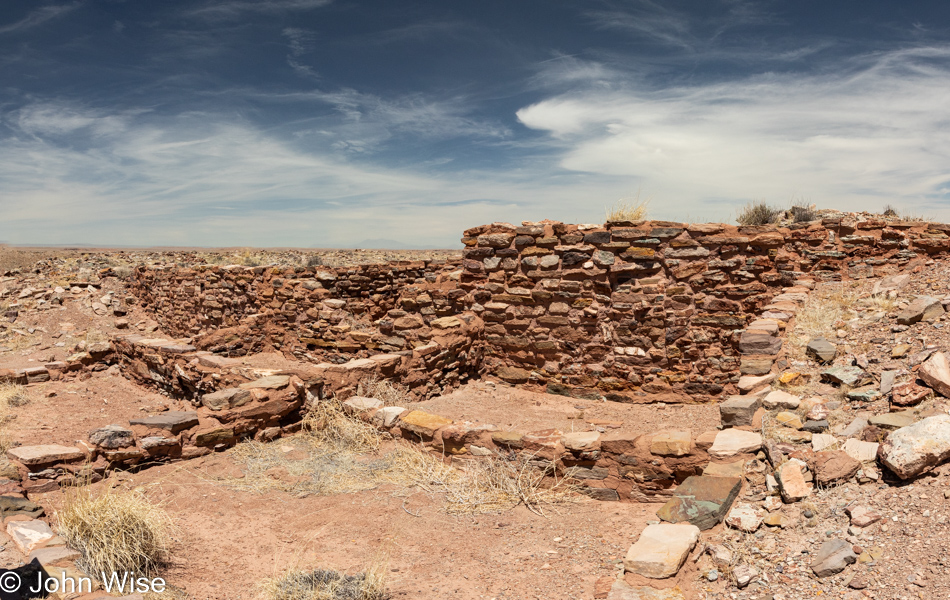
The people who lived here are called the Hisat’sinom, which is Hopi for “long-ago people.”
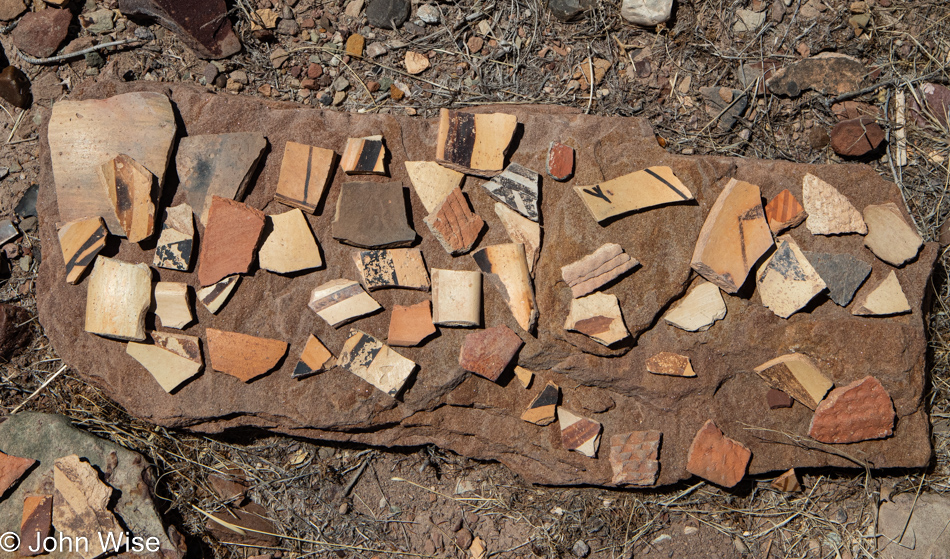
While outsiders might consider this a site of Native American ruins, the Hopi consider it to still be spiritually alive. As such, the broken pottery shards scattered across the Pueblos were the belongings of ancestors; they are not here as souvenirs, and out of respect, visitors should do their best not to collect the personal belongings of others. Just try to imagine that your grandparents died and your family was preserving their home as a shrine to their lives, but random visitors wandered into their bedroom and helped themselves to your family’s heirlooms.
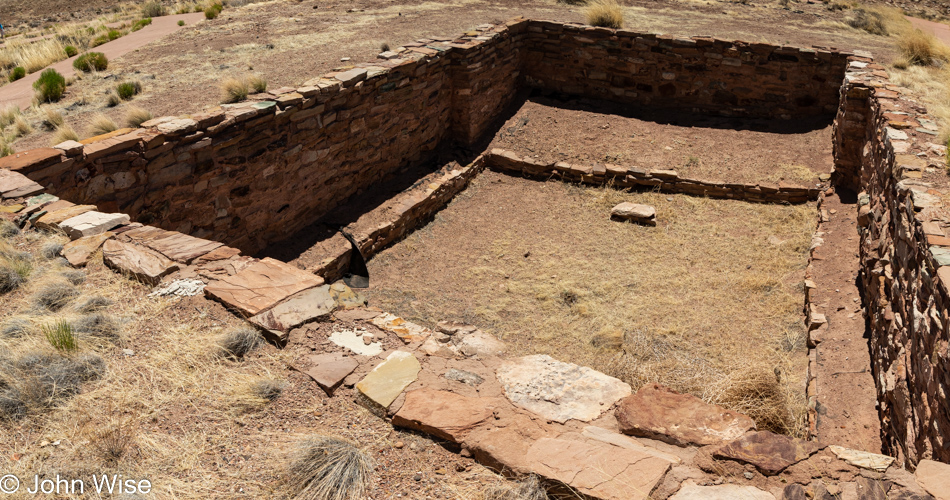
I wonder how many times I’ve written the explanation that this underground room is a kiva used for ceremony and political purposes?
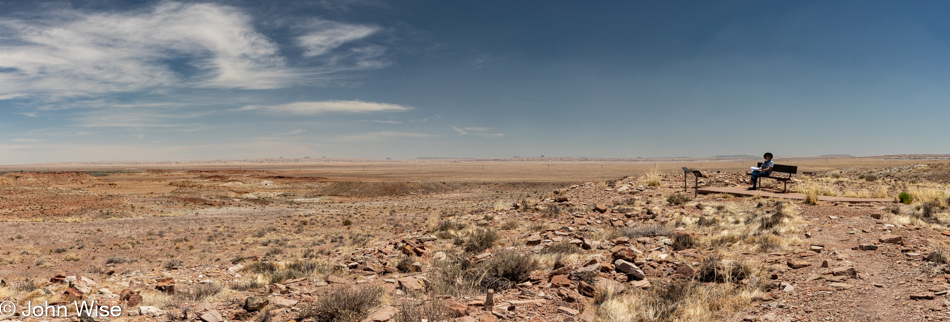
Maybe it looks desolate to us here 600 years after the villages were abandoned, but we can’t know life here back when the nearby Little Colorado River sustained life. As white Americans moved in back in the 1870s, they made off with many of the stones from the pueblos to build their own homes in a place such as Sunset, Arizona, that was eventually washed away during one particular bad flood of the river. There were other towns out here that didn’t make it either, such as Brigham City and Obed, while Joseph City, with a small population of 1,307 inhabitants, has managed to hold on.

As of today, 2022 will be known as the Year of the Lichen in John and Caroline’s fake Chinese calendar of themed years.
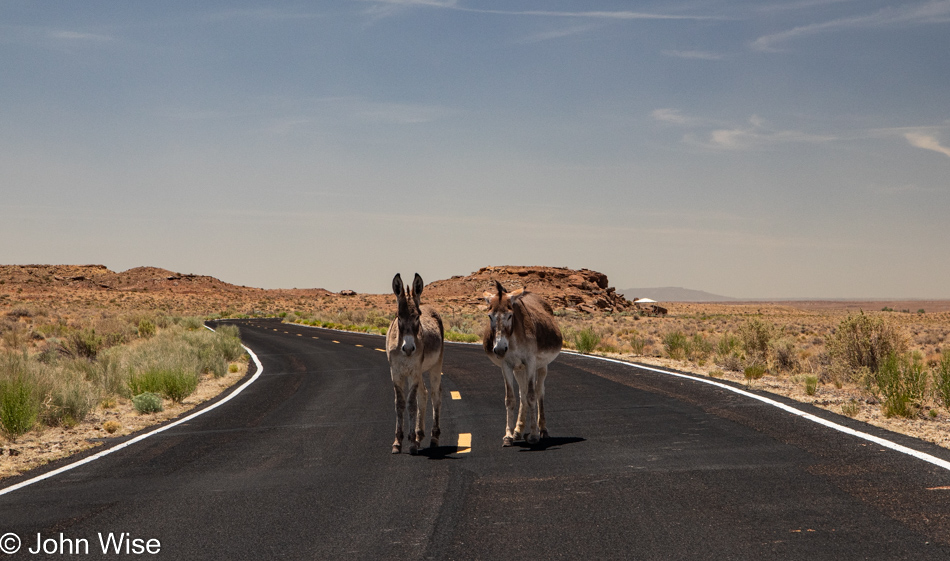
A gang of thug donkeys challenges us to just try passing them without making offerings. Tired of dried grass and some noxious plants that are unpalatable to all life, they held their ground with a menacing look of “Give us carrots or suffer the consequences.” Sorry, donkeys, but we have popcorn, bologna, boiled eggs, granola, and soy milk in the car, not exactly gourmet donkey fare.
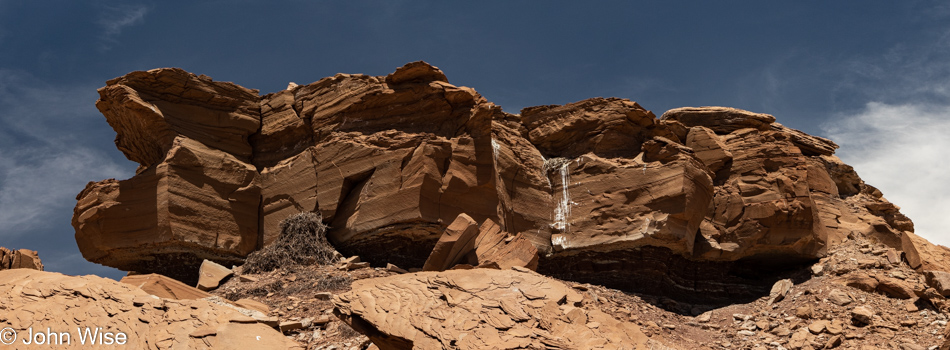
Loud squawking coming from a crevice allowed us to spot a raven’s nest with two juveniles awaiting feeding from mom and dad. But it was the thing that was nearly overlooked that should have first grabbed our attention…

…the ancient nest remains of what I can only guess is from eagles that once lived in the area. When I asked at the visitor center what this was, I was told that it was the accumulation of debris from the ledge above. Right, a small bit of lifeless rock above somehow collected twigs of a near-uniform size and then deposited them right here at the base of this cliff-face. I’d guess that eagles have been nesting here for centuries and that even before this easily identifiable pile was built, there’s an even older layer that sits below the small number of rocks that fell at some point in the past. Those pieces of sandstone should be able to be aged depending on the amount of patina if any, that exists on them. Golden eagles still live in the area and are of religious significance to the Hopi people. Come to think about it, maybe the person at the visitors center didn’t want to identify exactly what this was in order to stop the curios from dissecting/desecrating this beautiful old nest.
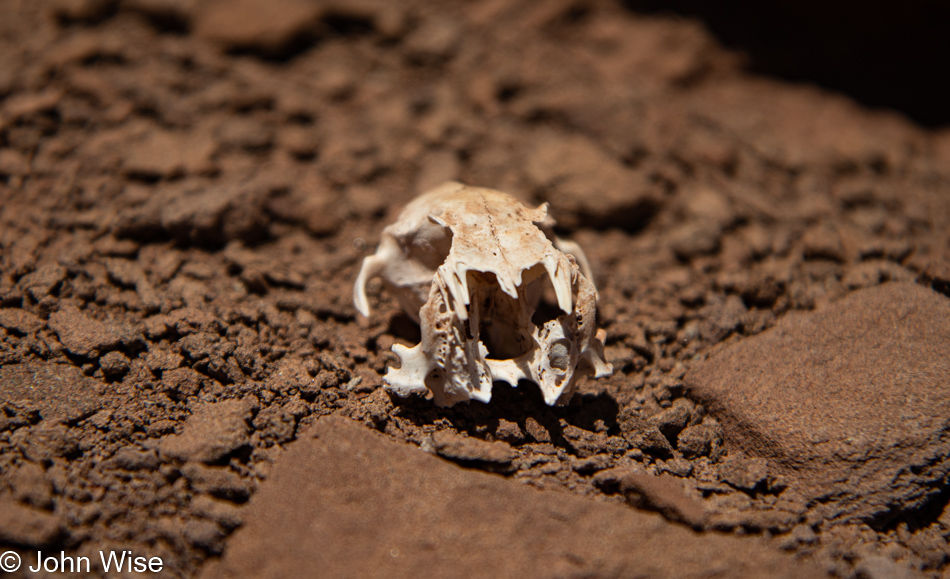
Eagle food remains.
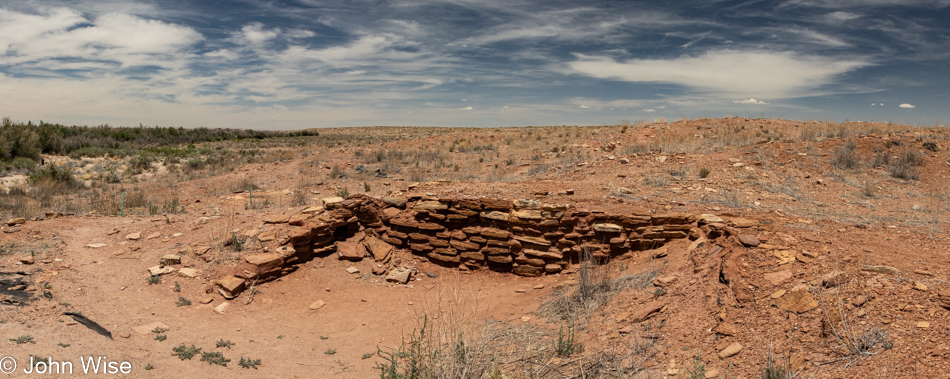
Most of the stones that comprised this village closest to the river are long gone as I guess they were the easiest to pilfer for the town down the road that is no longer down said road that is also no longer in existence.
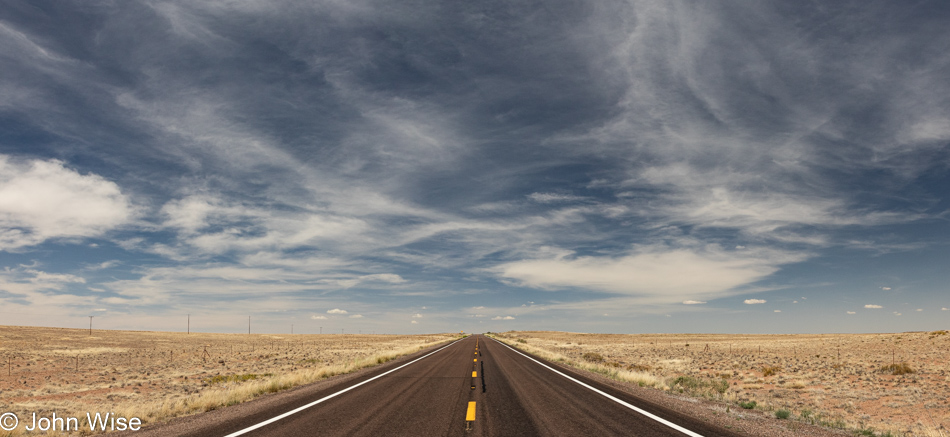
Well, we know where we’re goin’
But we don’t know where we’ve been
And we know what we’re knowin’
But we can’t say what we’ve seen
And we’re not little children
And we know what we want
And the future is certain
Give us time to work it out
We’re on a road to nowhere
Come on inside
Takin’ that ride to nowhere
We’ll take that ride
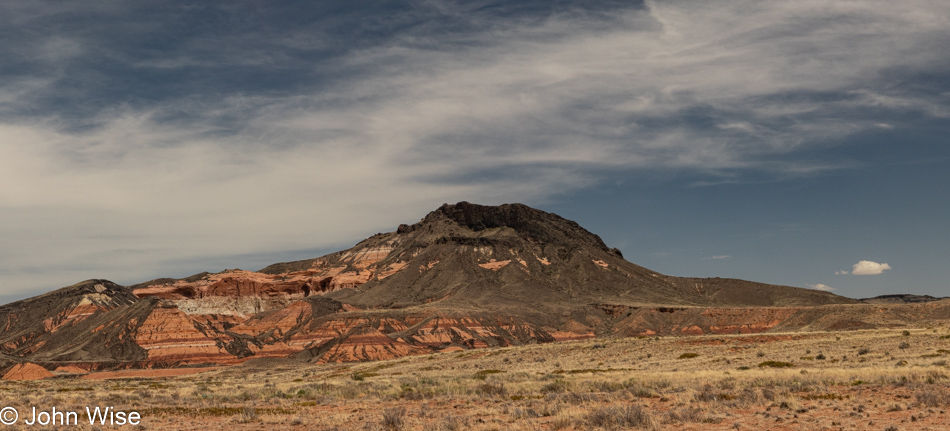
Junior Geologist John is going out on a rim here by taking a WAG (wild-ass guess) about what we are looking at. Could this be a cinder cone that sprouted out of some sandstone hills that eroded all around us? Could these be here because the lava covering protected them from being scraped off the landscape?
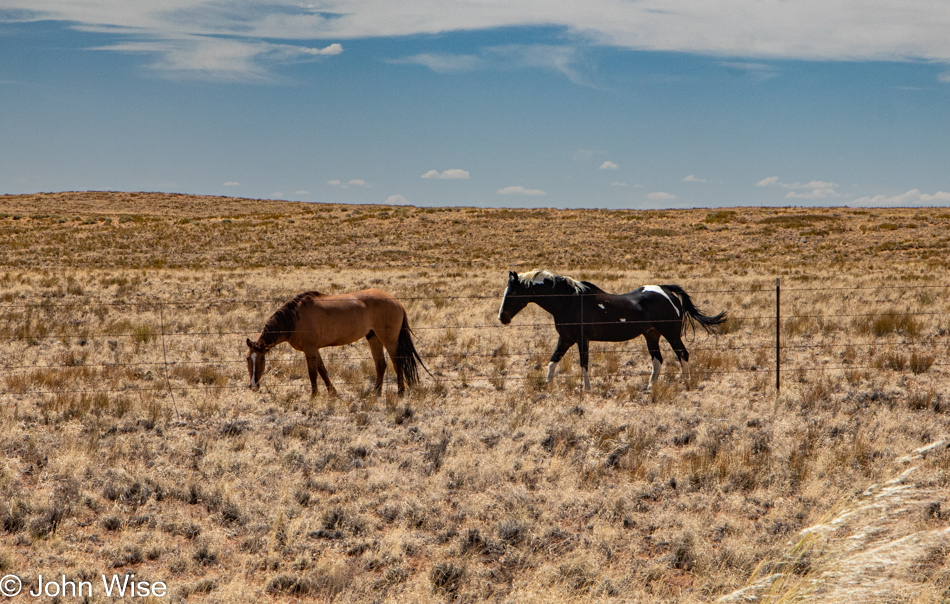
There we were; one minute, we were admiring some horses walking a fence line, and the next…
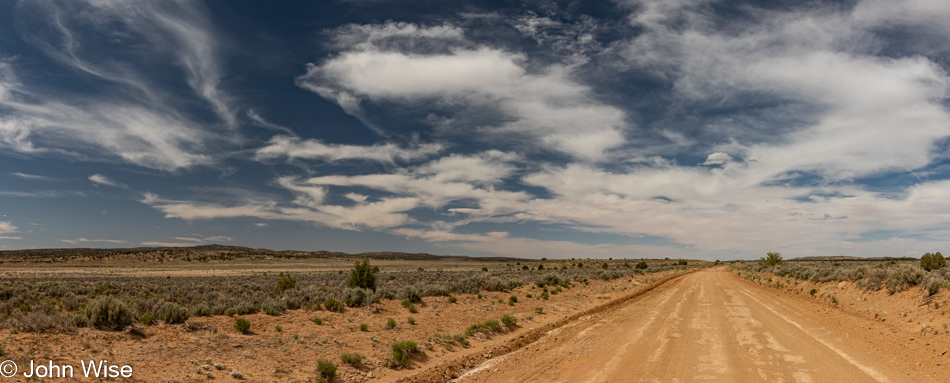
…we are driving down a dirt road that disappears on the horizon.
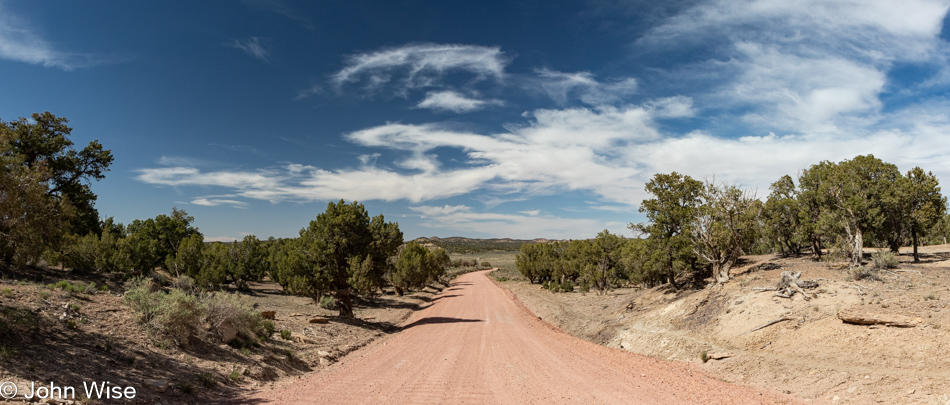
After following the dirt road for an infinity, we found ourselves beginning to wonder, just how long is infinity?

Hello, startled young bull; we apologize for interrupting your meal, but do you know where we are? He answers, “Down the road is a freckled horse, but he’s a bit aloof and unlikely to help you, though he certainly knows these lands.” Well, thanks, but I now have to wonder how is it we were able to communicate with a bovine?
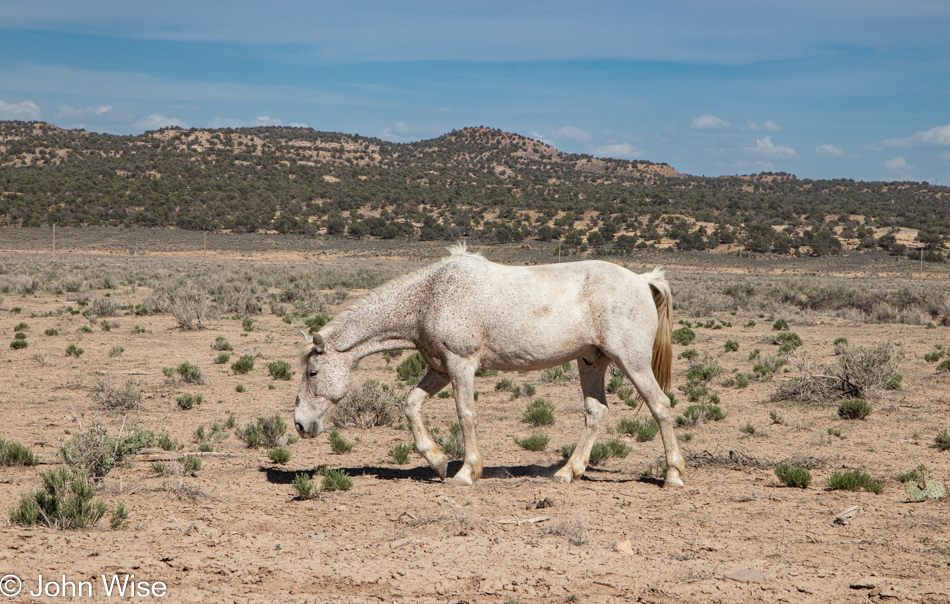
Hey, Mr. Horse with the freckled neck, the startled bull behind you told us you know the way, “I do; just follow me.”
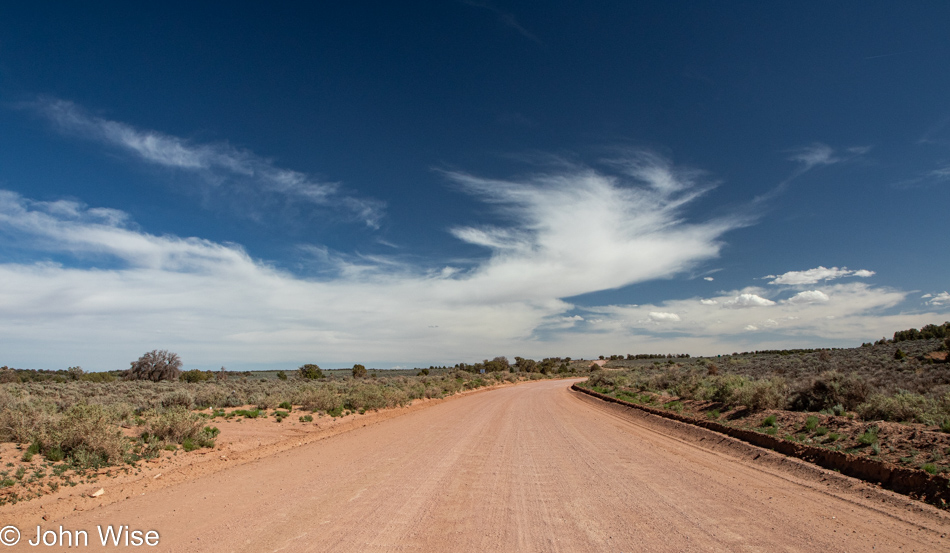
Well, this just looks like more of the same, only different.
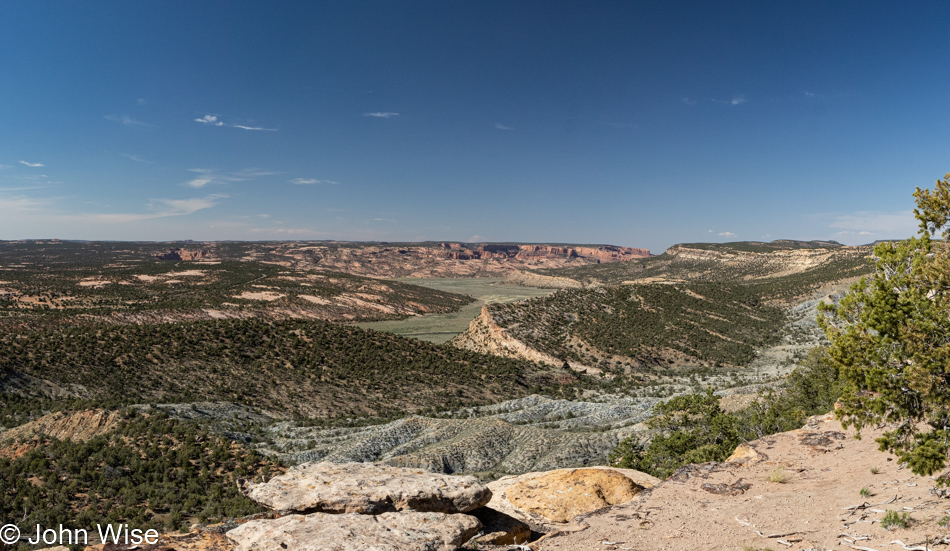
After countless miles in the dirt, sand, rock, uphill, and over dale, we immediately recognized the land far away from this overlook. Our road would take us right through the gap in the distance to Tsegi, Arizona.
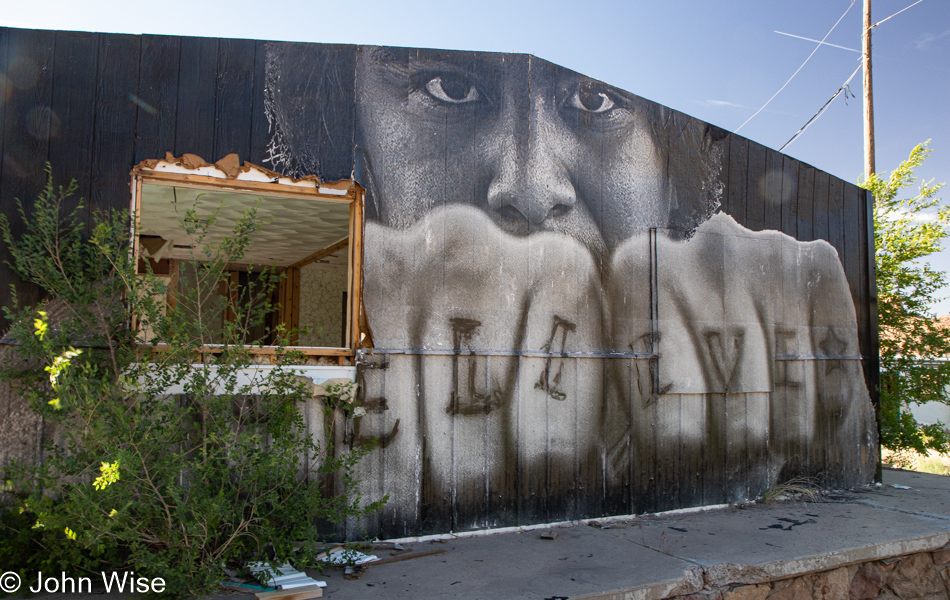
The Anasazi Inn that once stood here on Highway 160 is now mostly gone. Fire, looting, and possibly other forces have decimated this plot of land until what remains standing is a shell seen here and a couple of other remnants. The image in this photo is from a collaboration between poet Esther Belin and the photographer of Jetsonorama. On the left of the mural was the following note:
BELIEVE – Afterward we will get up. All together, with the sound of canyon wind howling, red clay masks preserving our faces. Our government clothes tattered, no longer creased with false doctrine. The pressurized steamed language escapes from the pores of our skin. The monogrammed label “Property of U.S. Government” erased from memory. Our teeth, sweat, saliva, fingernails, strands of hair recompose as the daughter of First Man and First Woman. The four support pillars reconfigure the directional mountains. The zenith and nadir bolt lightning into our backbone. The stone knife in our hand slays monsters. The sun rays fasten us snuggly to Nahasdzáán. The rainbow tethers a shield over us. All together, the intertwined winds breathe again. — Esther Belin
My apologies for not being able to maintain the format of the poem. Should you want to learn more about the project it might be found between www.jetsonorama.net, www.justseeds.org, and www.artjounalopen.org.
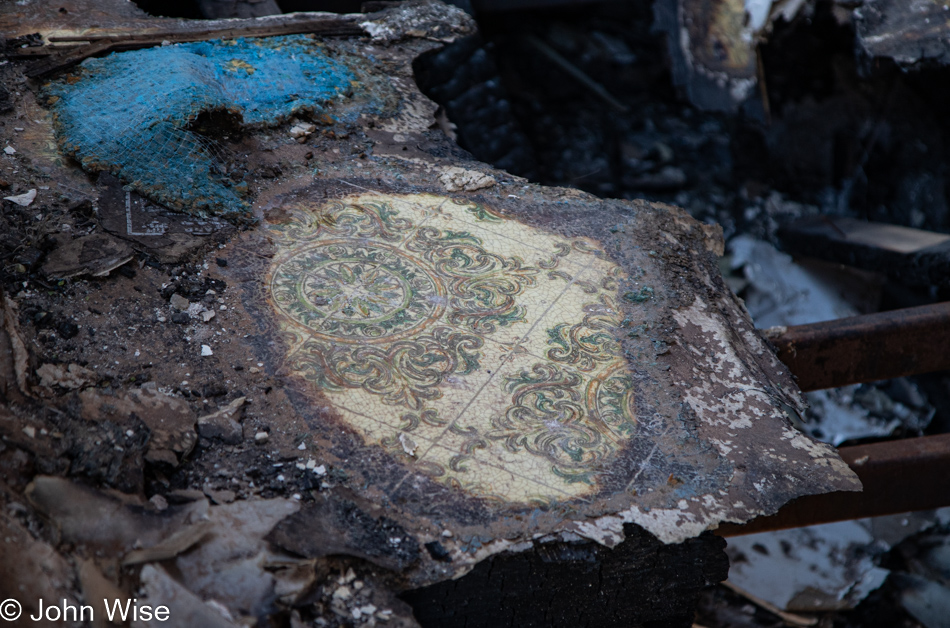
Someone out there used to stay at the Anasazi Inn in Tsegi, Arizona. They don’t know yet that it’s been wiped off the map, and maybe that person has some random memories of having stayed there. Might they remember the linoleum floor that was part of the experience? This is nearly all that is left that is still recognizable; in time, it too will be gone, and only the impressions still surviving in brains will be left.
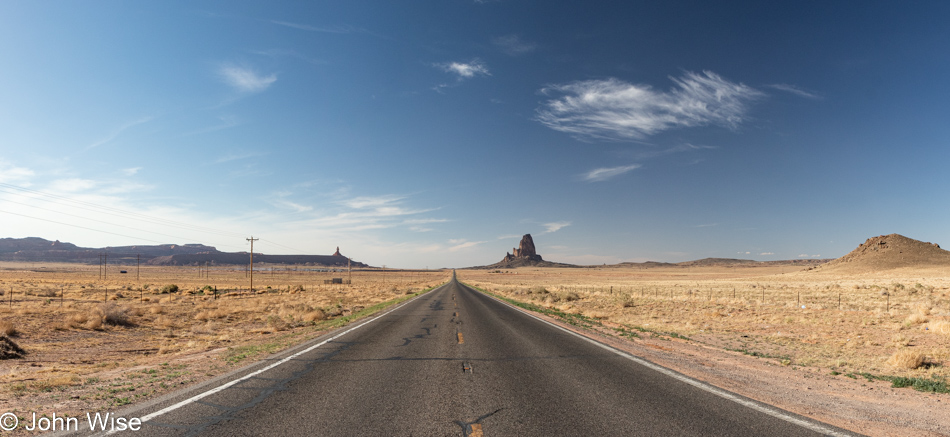
There should be many things between here and there or here and where we’ve been but often the dearth of things capturable is bigger than the space they fail to fill. Opportunities to cater to desires and experiences unknown to those moving through an environment are lost when the means or knowledge remain in a void as inaccessible as my wishes to discover what I’m missing. Not being Diné nor having the means of meaningful investment, I cannot act as the proxy that would bring forth what lies in the margins of my imagination that would take us beyond the space between.
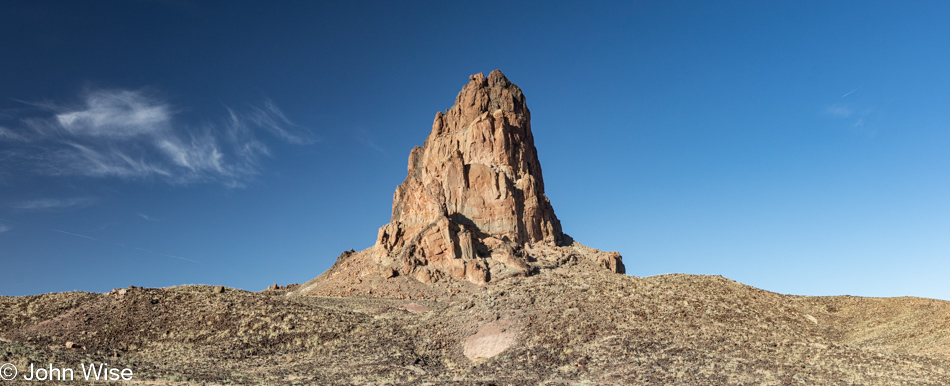
At least there’s El Capitan waiting to serve our senses.
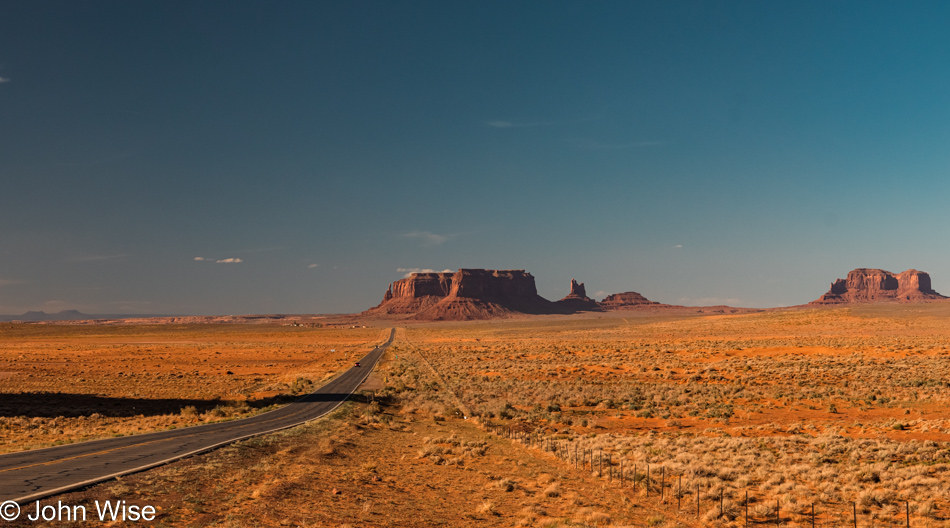
And after that, our first glimpse of Monument Valley.
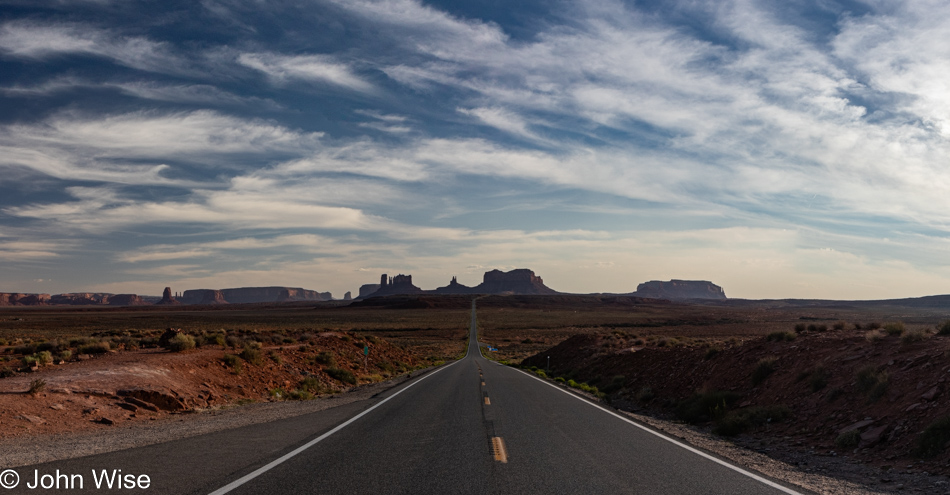
Little did I know what I wasn’t seeing here at Forrest Gump Point; I wasn’t seeing the crowds that apparently wait for the weekend before making their pilgrimage.
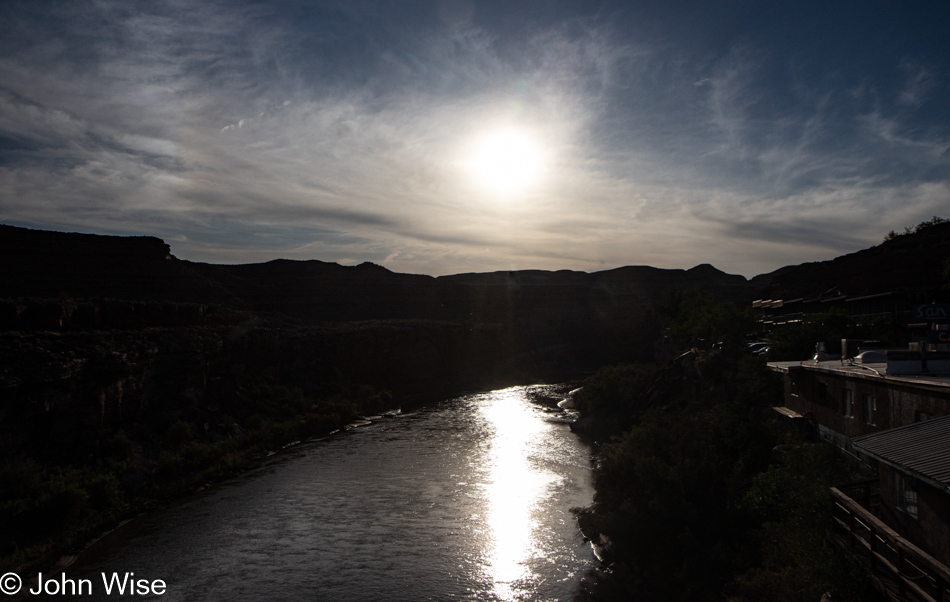
Passing over the San Juan River is the turning point, and I know we are not far from finding our pangs of hunger satiated by a slab of cow that has been foisted upon a swinging grill where it will cook to perfection over an open fire. Then, in the shadow of Valley of the Gods, we’ll sit roadside as we have many a time prior and enjoy another aspect of perfection as the sun sets and we bask in full stomachs and the knowledge we’ve already arrived and have no further to go than upstairs to survive the Mal de Puerco.